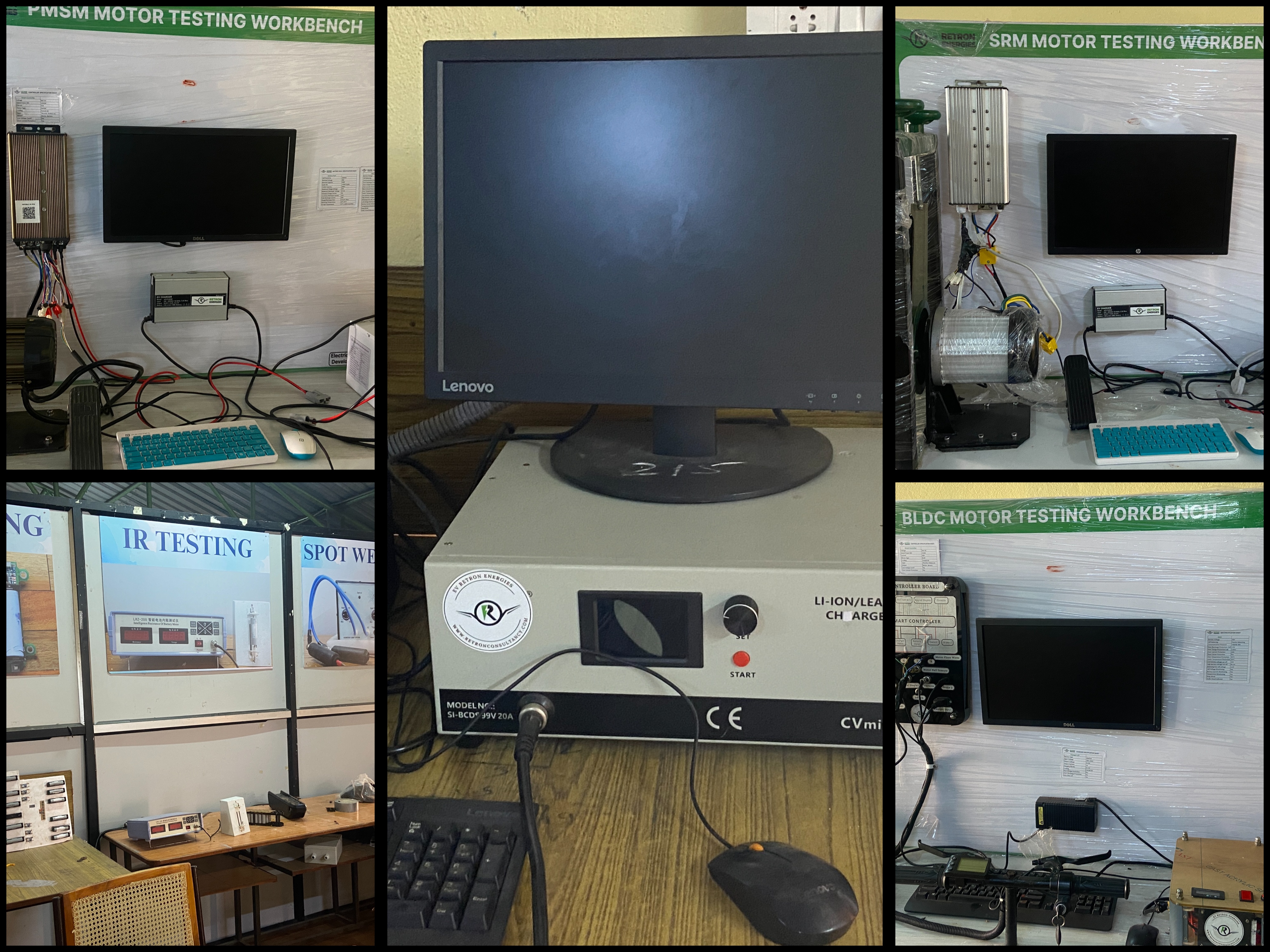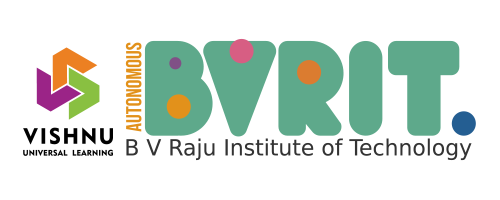PG:

Battery Management Systems (BMS) labs focus on the design, testing, and implementation of systems that monitor and manage rechargeable batteries, particularly in electric vehicles (EVs), renewable energy systems, and portable electronic devices. Here are some key aspects:
Objectives:
Model Battery Behavior: To simulate equivalent circuits of Lead-Acid and Lithium-Ion batteries for understanding their electrical characteristics.
Parameter Measurement and Estimation: To develop skills in measuring and estimating key battery parameters such as Voltage, Current, and State of Charge (SoC).
Design and Simulate BMS: To design and simulate both Passive and Active Battery Management Systems to enhance battery performance and safety.
Analyze Charging Characteristics: To examine the charging and discharging characteristics of batteries, including simulations of various charging methods.
Evaluate Impact on Power Systems: To assess the impact of battery charging systems on overall power systems and grid stability through simulation.
Experiments:
The lab provides hands-on experience with the following experiments:
- Simulation of Equivalent Circuits for Lead-Acid and Lithium-Ion Batteries to understand their electrical behavior.
- Simulation of Battery Parameter Measurement and Estimation for Voltage, Current, and State of Charge (SoC) to enhance monitoring capabilities.
- Simulation of Battery Parameter Measurement and Estimation for Depth of Discharge (DoD), State of Health (SoH), and State of Power (SoP) to assess battery performance.
- Simulation of Passive Battery Management Systems to explore their design and functionality in maintaining battery safety and efficiency.
- Simulation of Active Battery Management Systems to evaluate advanced control techniques for optimal battery operation.
- Simulation of Charging and Discharging Characteristics of Batteries to analyze their performance under various conditions.
- Simulation of a Nickel-Metal Hydride (Ni-MH) Battery Model integrated with a DC machine to demonstrate the charging and discharging processes.
- Closed-Loop Implementation Simulation of a Bi-Directional DC-DC Converter with Two Batteries to understand energy transfer and management.
- Design of a 2S, 4P Battery Pack with a Passive BMS Circuit to apply theoretical knowledge in a practical setup.
- Design of a 4S, 4P Battery Pack incorporating an Active BMS for improved energy management.
- Implementation of CAN Protocol for communication in both Active and Passive BMS setups to ensure interoperability.
- Simulation of Battery Charging using Non-Isolated DC-DC Converters to explore efficient charging methods.
- Simulation of Battery Charging with AC-DC Converters to analyze the conversion processes.
- Simulation of a Battery Charging System to evaluate its impact on overall power systems and grid stability.
Outcomes:
Enhanced Understanding of Battery Technologies: Students will gain a thorough knowledge of the operating principles and characteristics of different battery types, including Lead-Acid, Lithium-Ion, and Nickel-Metal Hydride (Ni-MH).
Practical Simulation Skills: Students will develop proficiency in using simulation tools to model battery behavior, allowing them to analyze and predict performance under various conditions.
BMS Design Competence: Participants will acquire the ability to design and implement both Passive and Active Battery Management Systems, equipping them with practical skills relevant to industry applications.
Analysis of Charging Techniques: Students will learn to evaluate various charging methods and their effects on battery performance, enhancing their ability to optimize charging processes.
Understanding of System Interactions: Students will be able to analyze the impact of battery charging systems on power grid stability and overall energy management, preparing them for roles in energy systems engineering.
Lab Equipment Overview:
The lab features computers with cutting-edge configurations, all installed with the latest version of MATLAB software. This advanced setup enables efficient computational tasks, data analysis, simulations.

The Electric Vehicle Lab is dedicated to the study and experimentation of various components and systems used in electric vehicles, particularly focusing on battery technologies and motor drives. Equipped with state-of-the-art computers and MATLAB software, the lab facilitates comprehensive analysis and testing of electric vehicle systems.
Objectives:
Evaluate Battery Performance: To analyze the charging and discharging behaviors of lithium-ion batteries under various conditions, improving understanding of their efficiency and lifespan.
Characterize Motor Control: To investigate and optimize speed control techniques for different motor types (BLDC, SR, PMSM) to enhance performance and responsiveness in electric vehicle applications.
Assess Battery Management Systems: To examine the functionality of Battery Management Systems (BMS) in monitoring and managing battery health and performance through software tools.
Conduct Load Testing: To determine the performance characteristics of electric motors under load conditions, ensuring reliability and efficiency in real-world scenarios.
Simulate Real-World Driving Conditions: To replicate and analyze drive cycle discharging of lithium-ion batteries, providing insights into energy consumption and range in practical electric vehicle use.
Experiments:
The lab provides hands-on experience with the following experiments:
Analyze the Charging & Discharging of Lithium-Ion Batteries in Various States
- This experiment investigates the behavior of lithium-ion batteries during different charging and discharging conditions to understand their efficiency and performance.
Obtain Characteristics of Auto Cycle Charging and Discharging of Lithium-Ion Batteries
- This experiment focuses on the auto cycle process to determine the characteristics of lithium-ion batteries as they charge and discharge automatically.
Determine the Drive Cycle Discharging of Lithium-Ion Batteries
- This experiment analyzes the discharging behavior of lithium-ion batteries under real-world driving cycles to assess their performance and range.
Obtain Characteristics of Charging and Discharging of Lithium-Ion Batteries Using Software-Based Charger/Discharger Tester
- Utilizing software tools, this experiment evaluates the charging and discharging characteristics of lithium-ion batteries, providing data for performance analysis.
Analyze Battery Management Systems (BMS) Using PC-Based Software and Bluetooth
- This experiment examines the functionality and effectiveness of Battery Management Systems, focusing on their monitoring and control capabilities through software and Bluetooth connectivity.
Obtain the Characteristics of Speed Control on BLDC Motor
- This experiment investigates the speed control methods employed in Brushless DC (BLDC) motors, analyzing their response and efficiency under varying conditions.
Determine the Performance Characteristics of Load Test on BLDC Motor
- Conducting load tests on BLDC motors helps assess their performance metrics, including torque, speed, and efficiency under load conditions.
Obtain the Characteristics of Speed Control on SR Motor Drive
- This experiment explores the speed control techniques used in Switched Reluctance (SR) motors, evaluating their performance and operational characteristics.
Determine the Performance Characteristics of Load Test on SR Motor Drive
- Load testing on SR motors provides insights into their performance under varying load conditions, contributing to the understanding of their efficiency and reliability.
Obtain the Characteristics of Speed Control on PMSM Motor Drive
- This experiment analyzes the speed control strategies for Permanent Magnet Synchronous Motors (PMSM), assessing their response and efficiency.
Determine the Performance Characteristics of Load Test on PMSM Motor Drive
- By conducting load tests on PMSM motors, this experiment evaluates their performance characteristics, including torque output and energy efficiency.
Outcomes:
Enhanced Battery Performance Data: Comprehensive data on the charging and discharging characteristics of lithium-ion batteries, leading to improved battery management and design.
Optimized Motor Control Strategies: Development of effective speed control algorithms for BLDC, SR, and PMSM motors, enhancing their efficiency and performance in electric vehicles.
Improved BMS Functionality: Insights into the effectiveness of Battery Management Systems, facilitating better monitoring and management of battery health and safety.
Reliable Motor Performance Metrics: Detailed performance characteristics from load testing, ensuring that electric motors meet operational requirements and reliability standards.
Real-World Application Insights: Data from drive cycle experiments that provide a clearer understanding of energy consumption and range, informing the design and engineering of more efficient electric vehicles.
Lab Equipment Overview:
The Electric Vehicle Lab is equipped with advanced technology to facilitate thorough research and experimentation in electric vehicle systems. Key equipment includes:
Lithium-Ion Battery (LFP Type) – 1.2 kW: This battery features a smart Battery Management System (BMS) and is paired with PC-based software for monitoring and analysis, allowing for in-depth evaluation of battery performance.
Battery Charger and Discharger Test Kit: This kit is essential for conducting experiments on the charging and discharging characteristics of the lithium-ion battery, enabling precise control and measurement.
1 kW BLDC Hub Motor: This motor is equipped with a spring balance loading arrangement, allowing for accurate load testing. It is controlled via a dedicated BLDC hub motor controller and panel board, providing insights into its performance under various conditions.
1 kW SR Motor Mid Drive: Similar to the BLDC setup, this motor includes a spring balance loading arrangement for load testing, along with an SR motor controller and panel board for detailed performance analysis.
1 kW PMSM Mid Drive Motor: This motor system is also integrated with a spring balance loading arrangement and is paired with a PMSM mid-drive motor controller and panel board, facilitating comprehensive testing and evaluation of performance characteristics.

The Powertrain Architecture Lab focuses on the design, simulation, and analysis of various power electronic converters and motor control strategies. Utilizing advanced software tools like MATLAB, the lab provides a comprehensive environment for exploring the complexities of powertrain systems in electric and hybrid vehicles.
Objectives
- Understand Power Converter Operation: To explore the principles and operational characteristics of various power electronic converters, including buck, boost, and buck-boost converters.
- Develop Control Strategies: To design and simulate effective open-loop and closed-loop control strategies for three-phase inverters and induction motors, enhancing performance and efficiency.
- Optimize Motor Performance: To investigate advanced control methods, such as field-oriented control and direct torque control, for improving the operation of three-phase induction motors.
- Analyze Grid Integration: To simulate the behavior of grid-connected inverters, understanding their role in renewable energy systems and the complexities of grid integration.
- Implement Speed Control Techniques: To design and test various speed control methods for different types of motors, including DC series, DC shunt, and PMSM, ensuring optimal performance in various applications.
Experiments
Simulation of Buck Converter Using MATLAB
- This experiment involves modeling and analyzing a buck converter to understand its voltage step-down capabilities and efficiency.
Simulation of Boost Converter Using MATLAB
- Participants will simulate a boost converter to explore its voltage step-up functionality and operational characteristics.
Simulation of Buck-Boost Converter Using MATLAB
- This experiment combines elements of both buck and boost converters, allowing for an understanding of bidirectional voltage conversion.
Simulation of Open Loop and Closed Loop Control of Three Phase Inverter Using MATLAB
- Students will investigate the control strategies for three-phase inverters, comparing open-loop and closed-loop systems for performance assessment.
Simulation of V/F Control of Three Phase Inverter Connected to Three Phase Induction Motor Using MATLAB
- This experiment focuses on voltage-to-frequency control methods for managing the operation of three-phase induction motors.
Simulation of Field Oriented Control of Three Phase Induction Motor
- Participants will model field-oriented control strategies to optimize the performance and efficiency of three-phase induction motors.
Simulation of Direct Torque Control of Three Phase Induction Motor
- This experiment explores direct torque control techniques, allowing for precise torque and speed management of induction motors.
Simulation of 3-Phase Grid Connected Inverter
- Students will simulate a grid-connected inverter to understand its operation in renewable energy systems and grid integration.
Simulation of Speed Control of DC Series Motor
- This experiment focuses on speed control techniques for DC series motors, analyzing their performance under various conditions.
Simulation of Speed Control of DC Shunt Motor
- Participants will simulate the control strategies for DC shunt motors, exploring their dynamic response and efficiency.
Simulation of Speed Control of PMSM
- This experiment involves modeling the speed control mechanisms of Permanent Magnet Synchronous Motors (PMSM) to optimize performance.
Simulation of Electric Vehicle Powered by BLDC Motor
- Students will analyze the powertrain of an electric vehicle driven by a Brushless DC (BLDC) motor, focusing on efficiency and control strategies.
Outcomes:
Comprehensive Understanding of Power Converters: Students will gain a solid grasp of the principles and performance characteristics of various power converters, enabling them to design and implement effective power conversion solutions.
Enhanced Control Strategy Proficiency: Participants will develop skills in creating and simulating both open-loop and closed-loop control systems for three-phase inverters, improving their ability to manage motor performance.
Improved Motor Control Techniques: The lab will provide insights into advanced control methods such as field-oriented control and direct torque control, leading to optimized performance in induction motors.
Insights into Grid-Connected Systems: Students will understand the operational dynamics of grid-connected inverters, equipping them to work with renewable energy integration and smart grid technologies.
Expertise in Motor Speed Control: Through simulations, participants will master various speed control techniques for different motor types, enhancing their capabilities in electric vehicle design and other applications.
Lab Equipment Overview:
The Powertrain Architecture Lab is equipped with advanced computers and MATLAB software, essential for conducting simulations and analyses of powertrain systems.
Computers: The lab features high-performance computers with the latest specifications, providing the computational power necessary for running complex simulations and processing large datasets efficiently.
MATLAB Software: MATLAB serves as the primary tool for modeling, simulating, and analyzing power electronic converters and motor control strategies. Its extensive libraries and toolboxes enable detailed studies of various powertrain components, facilitating a deeper understanding of their behaviors and interactions.
Together, this equipment supports a wide range of experiments, allowing students and researchers to explore innovative solutions in electric and hybrid vehicle technology.
The Vehicular Communication Networks Lab is designed to explore the technologies and protocols that enable communication between vehicles and various network components. This lab focuses on both hardware and software aspects of vehicular communication, providing hands-on experience with wireless sensor networks, IoT protocols, and vehicle communication systems.
Objectives
Familiarize with Hardware Components: To provide hands-on experience with the hardware components of wireless sensor networks (WSNs) and the configuration of communication modules like Xbee.
Develop Programming Skills: To enhance coding abilities by programming Arduino boards to interface with various sensors for data collection and processing.
Implement Cloud Connectivity: To learn how to upload sensor data to cloud platforms using HTTP protocols, facilitating remote monitoring and data accessibility.
Explore IoT Protocols: To understand and implement IoT network protocols, particularly MQTT, for efficient data transmission in vehicular communication networks.
Evaluate Communication Protocols: To test and analyze the performance of vehicular communication protocols, such as IEEE 802.11 P and V2X interfaces, ensuring their effectiveness in real-world applications.
Experiments
- Familiarization of Hardware Components of Wireless Sensor Networks (WSNs) and Configuration of
Xbee using XCTU Software. (Components: Arduino Boards, Xbee modules, Sensors, Xbee Explorer,
IoT interface/bridge, WiGuy Routers, Switch, etc.) - Coding the Arduino Board for different Sensors.
- Measurement and collection of sensor values.
- Development of program to upload sensor values to the cloud through HTTP.
- IOT Network Protocol – MQTT.
- Collection of Measured Data at the Coordinator (Centralized node).
- Development of IOT Network Application and Testing.
- Performance Testing of V2X Interface.
- Performance Testing of VCN Protocol – IEEE 802.11 P.
- Conduct CAN communication and ECU network in EV
- Conduct UDS- vehicle dynamics
- Perform ECU simulation, automotive V & V using CAN tools.
Outcomes:
Practical Knowledge of WSN Components: Students will gain a thorough understanding of the hardware components used in wireless sensor networks, including their configuration and functionality.
Proficiency in Programming: Participants will develop strong programming skills for Arduino and other embedded systems, enabling them to effectively interface with various sensors and collect data.
Cloud Integration Skills: Students will acquire the ability to upload and manage sensor data in cloud environments, enhancing their understanding of IoT applications and remote data handling.
Expertise in IoT Protocols: Participants will become familiar with key IoT communication protocols, particularly MQTT, enabling them to design and implement efficient data transmission solutions.
Evaluation of Communication Protocol Performance: Students will learn to assess and analyze the performance of vehicular communication protocols, equipping them with the skills needed to optimize communication systems in vehicles.
Lab Equipment Overview:
- Arduino Board
- The Arduino board serves as the foundation for various experiments in the lab, enabling students to develop and prototype applications that interface with sensors and communicate data effectively.
- Xbee Module
- Used for wireless communication, the Xbee module facilitates data transmission between devices in the lab, allowing for real-time communication in wireless sensor network experiments.
- Arduino Board with Sensor Kit
- This setup enhances experiments by providing hands-on experience with data collection and analysis, enabling students to measure environmental parameters and integrate them into IoT applications.
- Performance Testing of V2X Interface Kit
- This kit is crucial for evaluating vehicle-to-everything communication in the lab, allowing students to conduct tests on communication reliability and data exchange in connected vehicle scenarios.
- Performance Testing of VCN Protocol – IEEE 802.11 P Kit
- Utilized in the lab to analyze the performance of the IEEE 802.11 P protocol, this kit helps students assess connectivity and data transfer in vehicular communication networks, essential for developing intelligent transportation systems.
Research Laboratories:
The ATL lab is also used as research laboratory for faculty and students’ management is giving funds for interdisciplinary projects in the institute. ATL provides a rich, authentic learning experience for students. It is a real time platform for the students to learn and experience engineering design process, to apply their academic skills in a real world, context, and to develop important workplace skills not usually taught in the classroom. ATL lab trains students and faculties in developing projects related to differently abled people and are presented in the competitions held at various other colleges.
- Training of students in installation of the PV modules, balance of systems and instruments. The measuring instruments used for this project use cutting edge technology and have been sourced by Elkem and Titan from leading vendors in the world. The performance of the modules in terms of energy generation and so on can be monitored from any part of the world. The Governments if India & Norway had signed a protocol some years ago for the promotion of various technologies including clean and green technologies. BVRIT as the academic partner has entered into a three way tie up with Elkem solar, Norway (Research partner) and Titan Energy Systems Ltd (Industry Partner). Elkem Solar, Norway, have developed solar grade silicon cells that are converted into photovoltaic (PV) module.
- Exposure of students to state-of-the-art technology in terms of PV modules, measuring instruments, sensors, data acquisition with associated software and evaluation techniques
- Developing the analytical skills of students by giving them an opportunity to involve themselves in a long-term performance study and interpret/analyze the data acquired
- An excellent paradigm for industry, academia and R&D collaboration – a Win-Win situation for all. Such an initiative would constitute the first step in establishing a full-fledged Centre of Excellence for Solar Energy at BVRIT.










